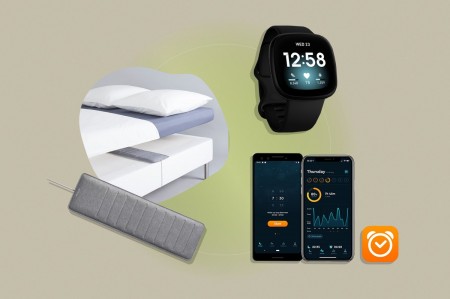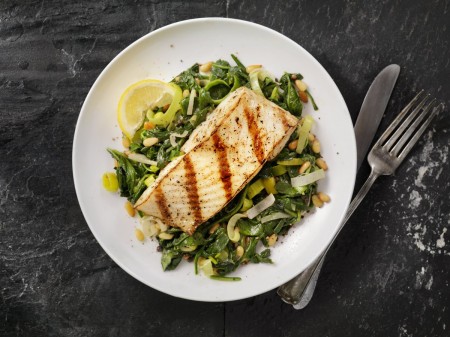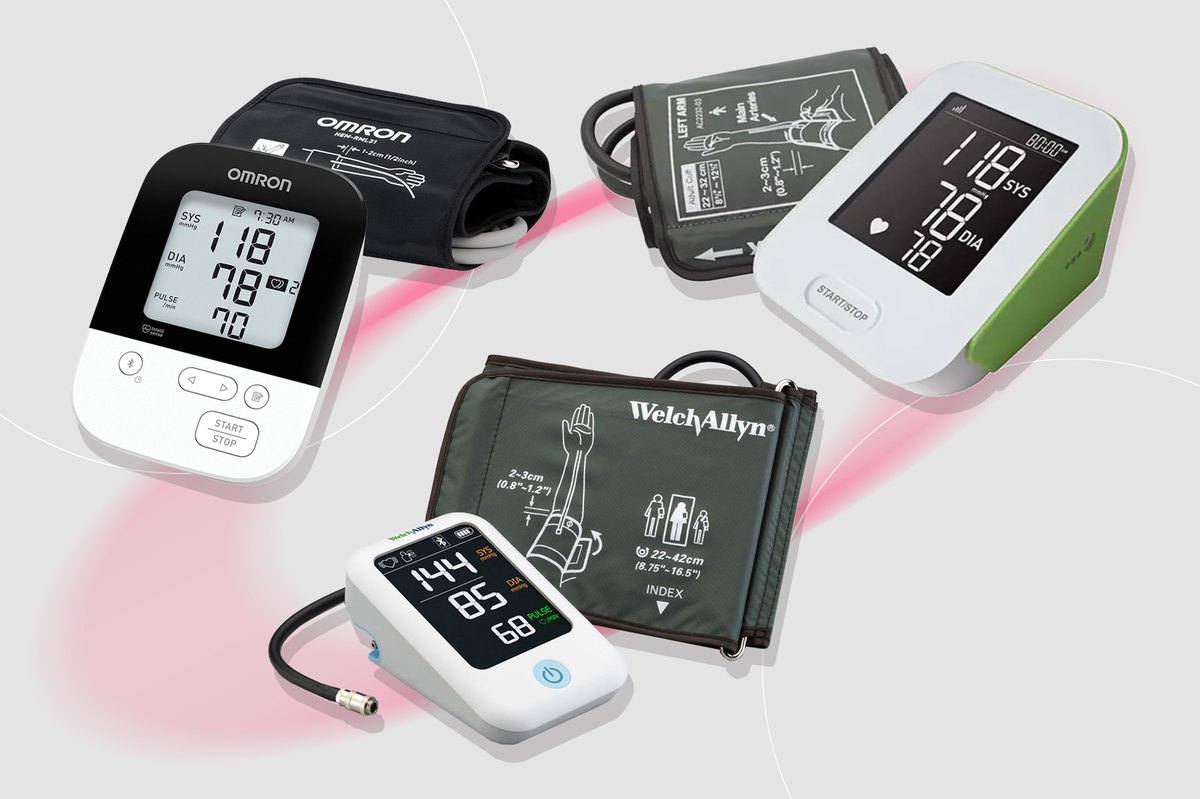
Advertisements
While it's always best to have your vital signs regularly taken and monitored by a professional provider, there are some valid reasons why your doctor might want you to monitor your blood pressure at home — and that's where the best blood pressure monitors for home use come in.
Video of the Day
The most common reason you might have to check your blood pressure at home is that some people experience "white coat syndrome," where their blood pressure is significantly higher in the doctor's office than it is at home, says Hoang Nguyen, MD, interventional cardiologist at MemorialCare Heart & Vascular Institute at Orange Coast Medical Center in Fountain Valley, California.
This could be due to nervousness from a variety of factors, like the stress of trying to find parking or feeling anxious about medical appointments in general.
On the flip side, there's also masked hypertension, in which a person's blood pressure may be lower in the doctor's office than at home.
So if your doctor recommends you monitor your own blood pressure, here are the best blood pressure monitors for home use to consider.
Quick Picks
- Best Overall: Welch-Allyn 1700 Series ($120, HopkinsMedicalProducts.com)
- Best Bluetooth: Omron 5 Series ($56.50, HeartRateMonitorsUSA.com)
- Best on a Budget: CVS Self-Taking Blood Pressure Monitor ($19.99, CVS.com)
- Best for Travel: Omron Evolv ($89.99, OmronHealthcare.com)
- Best for People With Larger Arms: LifeSource Blood Pressure Monitor With Extra Large Cuff ($104.99, Amazon.com)
- Best for People With Smaller Arms: LifeSource Blood Pressure Monitor With Small Cuff ($54.99, Amazon.com)
- Best Multi-User: A&D Medical Upper Arm Blood Pressure Monitor for Up to 4 Users ($57.16, Amazon.com)
How We Choose
So, what is the most accurate blood pressure monitor for home use? We interviewed Dr. Nguyen to better understand what to look for in an at-home BP monitor. The following products fit this criteria:
- Measure blood pressure from the arm, using a cuff, instead of the wrist
- Are clinically validated by independent parties
- Offer different cuff sizes to accommodate larger or smaller arms
Tip
Before using a top-rated blood pressure monitor at home, take it to your doctor's office. Have the doctor take your blood pressure with their equipment, and then take it with your monitor to compare results. This way, your doctor can make sure your technique is correct and that the cuff you bought is giving accurate results.
1. Best Overall: Welch-Allyn 1700 Series
Visit Page https://www.hopkinsmedicalproducts.com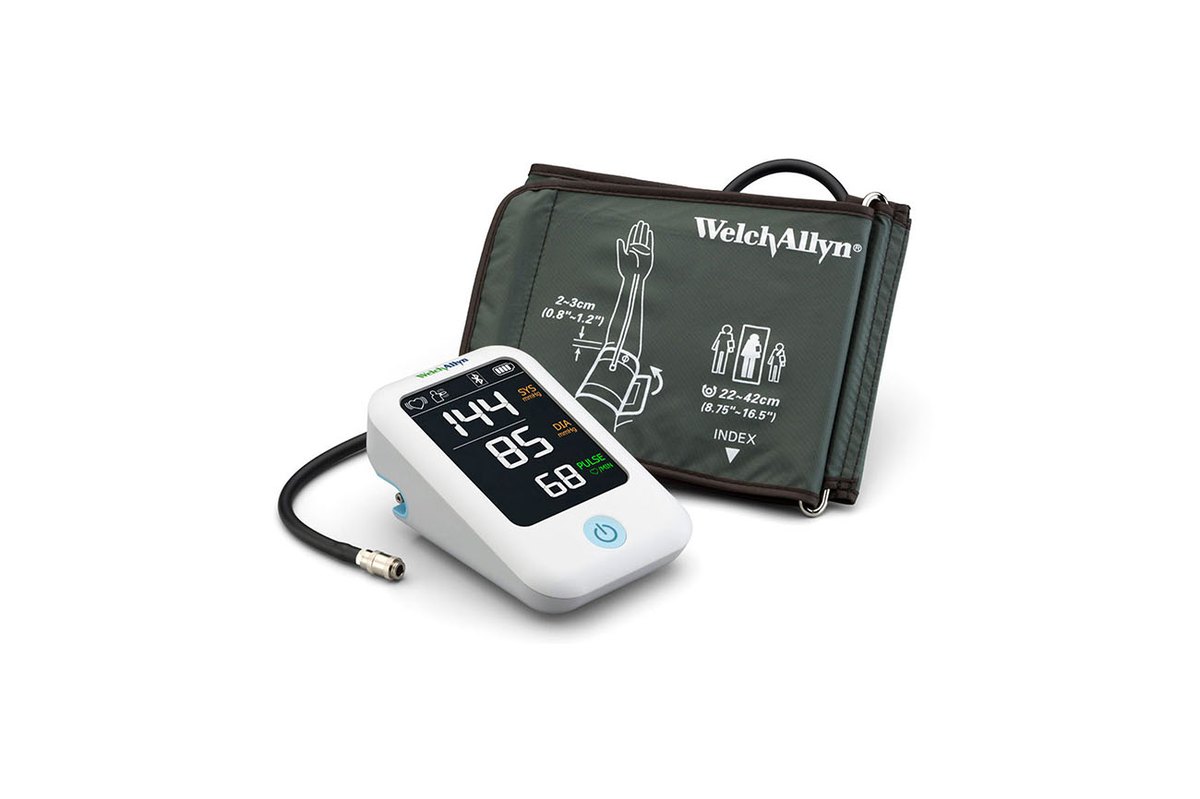
The Welch-Allyn brand of blood pressure monitors and cuffs gets Dr. Nguyen's recommendation. This single-user version is touted as being among the most accurate blood pressure monitors to use at home while also being medically accurate enough for a doctor's office.
The 1700 series automatic blood pressure cuff comes complete with both a free smartphone app and clinical accuracy. Accurate readings are recorded at a rate of 97 percent, and it come with a 2-year warranty on the monitor and 1-year on the cuff.
The included cuff will measure arms between 8.6 and 16.5 inches around, but the monitor is compatible with extra-large and extra-small Welch-Allyn cuffs as well (those are sold separately).
This device is also known for taking a blood pressure reading in only about 20 seconds and being very comfortable to use on the arm, avoiding unnecessary pressure and discomfort.
Buy it: HopkinsMedicalProducts.com; Price: $120
2. Best Bluetooth: Omron 5 Series
Visit Page https://www.heartratemonitorsusa.com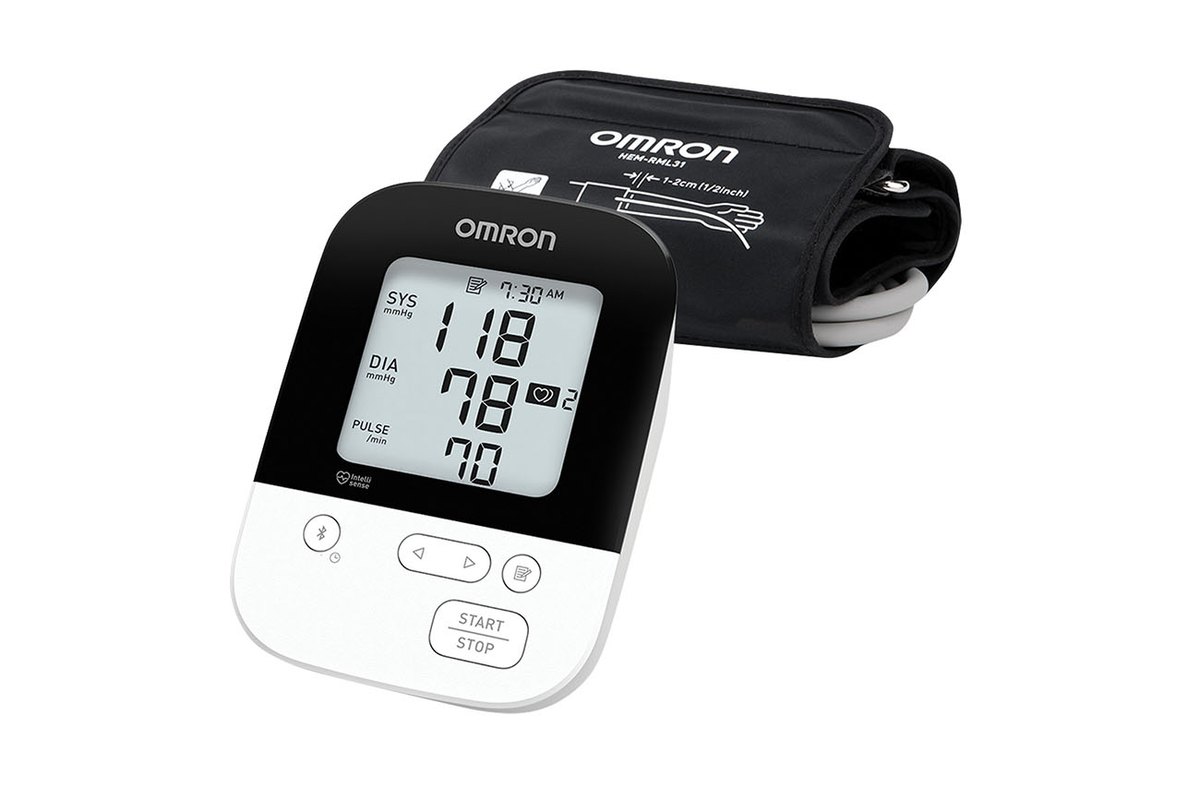
"Omron has a very good app that will connect with your device and allow you to use the app to keep track of your logs," Dr. Nguyen says. "Then you bring your phone with the app with you (so you don't have to bring the blood pressure cuff with you) to your doctor's office and have the doctor look at it."
This Bluetooth-enabled best blood pressure machine syncs readings to your phone through the accompanying iOS or Android apps and measures a total of five data points for a more accurate reading. It clearly displays a "HIGH" reading for systolic (the top number) readings of 130 mmHg or above and diastolic (the bottom number) of 80 mmHg or above.
Plus, it stores up to 60 individual readings in the monitor itself and offers unlimited users and storage through the app. The included cuff will fit fits arms between 9 and 17 inches around. It also offers the helpful feature of programming to take readings at set intervals, such as at 15 seconds, 30 seconds, 60 seconds or every 2 minutes.
Buy it: HeartRateMonitorsUSA.com; Price: $56.50
3. Best on a Budget: CVS Self-Taking Blood Pressure Monitor
Visit Page https://go.skimresources.com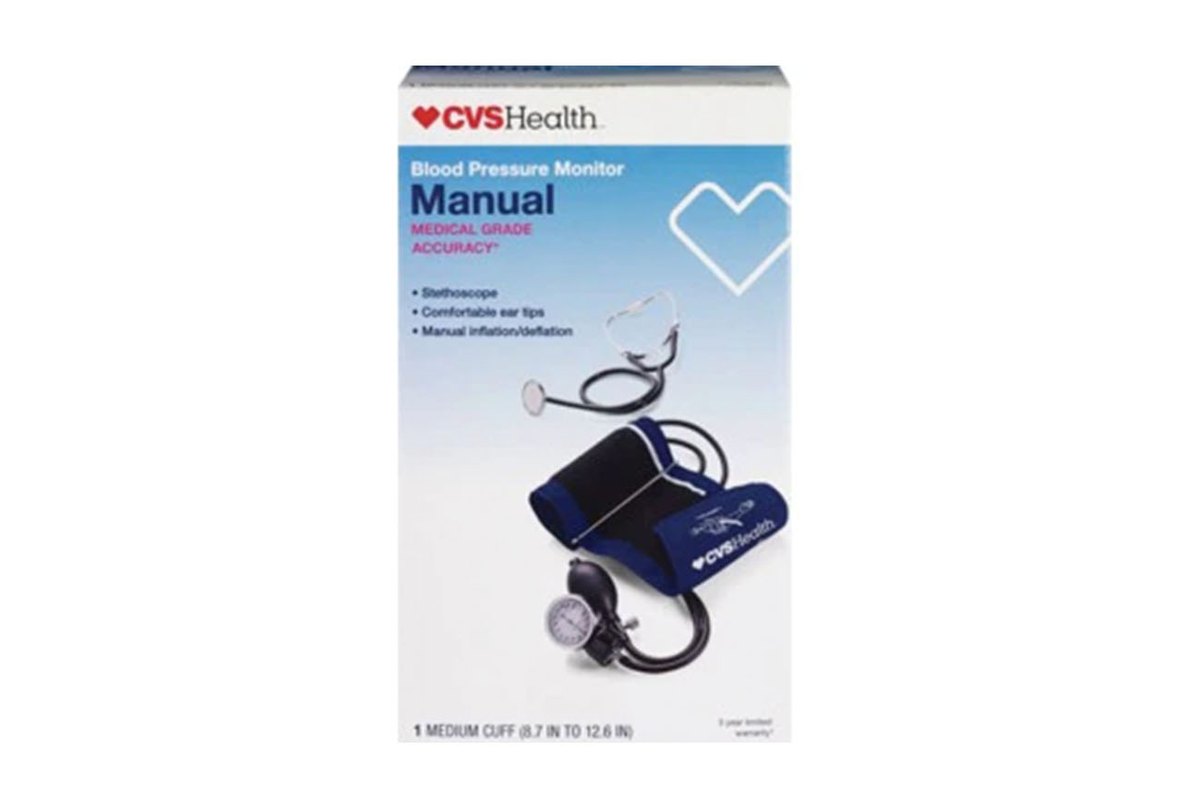
If you're looking for the most budget-friendly option for a blood pressure monitor, you can't go wrong with an old-school manual monitor and cuff. This version from CVS Health even comes with a stethoscope in the box, so you don't have to buy anything separately.
Of course, you'll need some skills in order to take a manual blood pressure, so this monitor might be best suited for caregivers or if you have someone else to take your blood pressure for you.
Additionally, there is no ability for storage within this monitor or Bluetooth capability, but it does have medical-grade accuracy, a storage case and the cuff can fit arms that are between 8.7 and 12.6 inches around.
Buy it: CVS.com; Price: $19.99
4. Best for Travel: Omron Evolv
Visit Page https://go.skimresources.com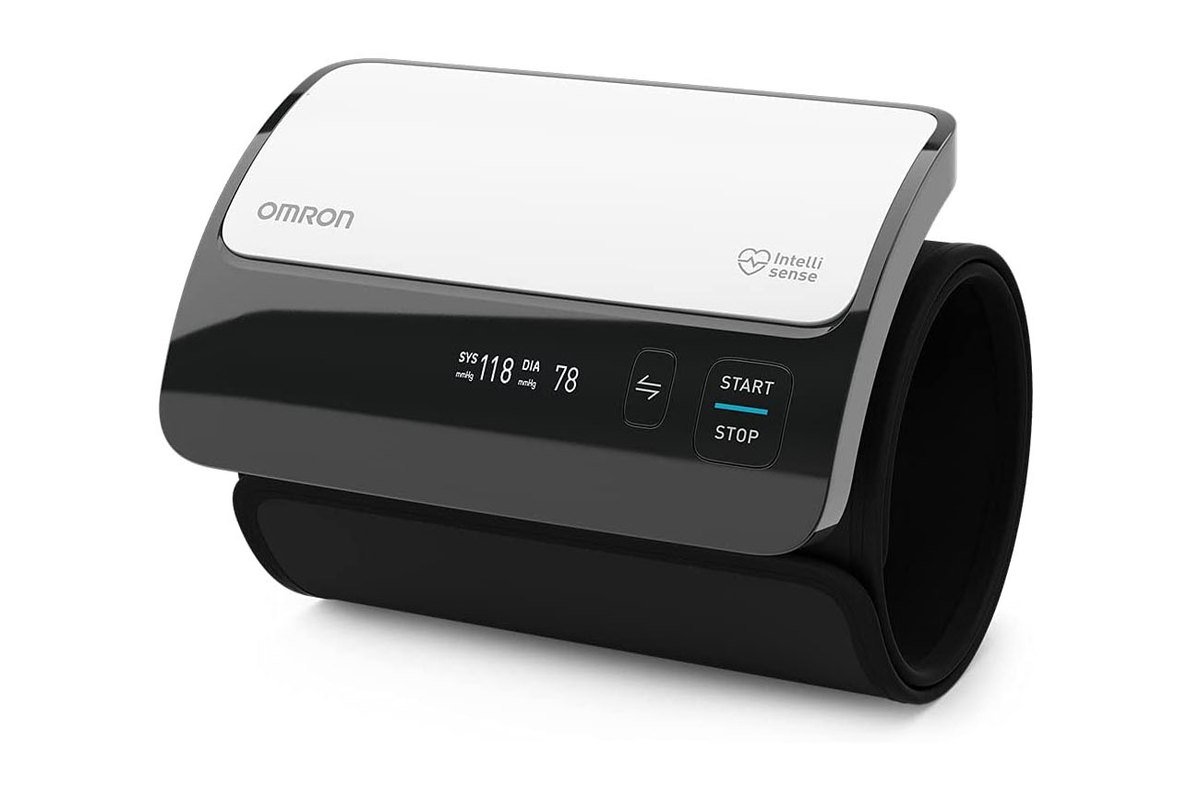
Dr. Nguyen named OMRON as one of his favorite brands of blood pressure monitors, and while they have many great monitors to choose from, this one is especially conducive to traveling because it comes in a one-piece design with its own compact case. The monitor is built right on top of the cuff itself and it's battery-powered, so it's very streamlined and perfectly portable.
Plus, it meets the Validated Device Listing (VDL) criteria for validation of clinical accuracy, and it can store unlimited users and storage in the accompanying Bluetooth app.
Buy it: OmronHealthcare.com; Price: $89.99
Advertisements
5. Best for People With Larger Arms: LifeSource Blood Pressure Monitor With Extra Large Cuff
Visit Page https://www.amazon.com
When choosing a blood pressure monitor for people with larger arms, Dr. Nguyen stresses that you should look for a monitor that can accommodate the arm and not the wrist, because wrist readings are "very inaccurate."
LifeSource's extra-large cuff fits arm sizes between 16.5 and 23.6 inches around, and the tapered design helps it wrap around the natural shape of your arm, leading to a more accurate reading. It's also been clinically validated for accuracy by an independent party.
Buy it: Amazon.com; Price: $104.99
6. Best for People With Smaller Arms: LifeSource Blood Pressure Monitor With Small Cuff
Visit Page https://www.amazon.com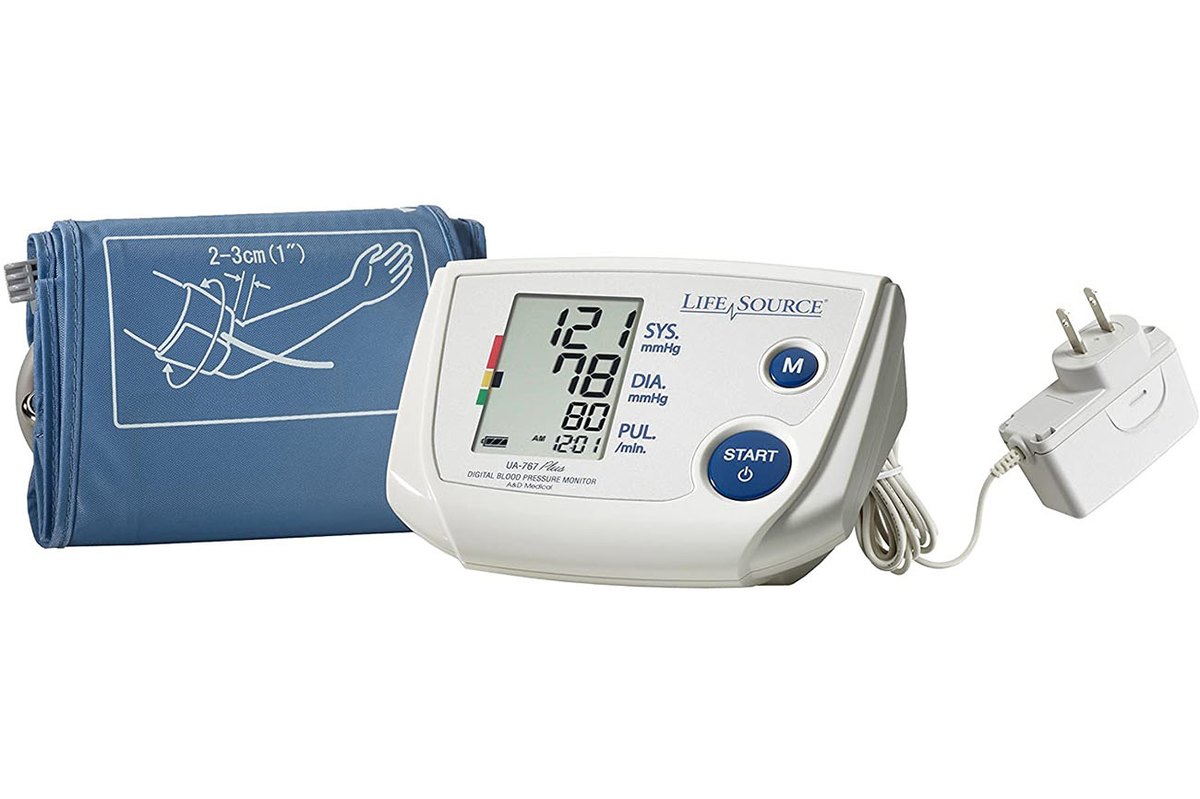
This LifeSource monitor is specifically designed with a cuff for smaller arms. The cuff fits arms between 6.3 and 9.4 inches around, which, per the brand, is perfect for petite and small-framed people.
The monitor and cuff are clinically validated for accuracy and the entire system operates off one button with a large digital screen. Additionally, this monitor and cuff combo is FSA-eligible and can store 90 readings right on the device with a date and time stamp to make logging and recording a breeze.
One thing to note is that you will need to use this monitor with its AC adaptor; it doesn't offer battery power. You'll also want to keep in mind that, according to the American Heart Association, a cuff that's too small could give you an inaccurately high reading, so it's a good idea to measure your arm and check with your doctor that you are using the right size.
Buy it: Amazon.com; Price: $54.99
7. Best Multi-User: A&D Medical Upper Arm Blood Pressure Monitor for Up to 4 Users
Visit Page https://www.amazon.com
Advertisements
While many people might be shopping for a blood pressure monitor for just one person, some might need a cuff that can handle multiple users. If that's you, you'll want to look for a cuff that allows for different user profiles.
"These are helpful if, say, you have a spouse or a sibling at home that also has hypertension and you want to have different profiles for different people," Dr. Nguyen says.
This cuff by A&D will handle up to four users and has proven clinical accuracy. It's surprisingly budget-friendly, has gentle inflation and is straightforward to operate and read once the blood pressure is displayed.
The two things you'll want to consider before buying this cuff is that it doesn't have a compatible app (up to 60 readings per user are stored on the device itself) and that it offers a cheaper version without an AC adaptor, so if you don't already have one, be sure to spring for the more expensive version.
Buy it: Amazon.com; Price: $57.16
What to Look for in a Blood Pressure Monitor
While the aforementioned blood pressure monitors are some recommendations you can check out, you'll soon find that there are many, many different options for at-home monitors you can buy, so it can be tough to narrow it down. To help you choose the best monitor for you, here are some tips:
1. Choose a Validated Monitor
When in doubt, Dr. Nguyen says to make sure the monitor is validated, which means it meets testing standards.
And because that can be hard knowledge to glean off-hand, you can check it through ValidateBP.org, an American Medical Association-hosted site that lists only blood pressure monitors that meet rigorous testing standards. You can go to the site, use the different built-in filters to find the right cuff for you based on what you need and then search online to actually purchase it.
2. Stick to Arm Cuffs Over Wrist Options
Secondly, Dr. Nguyen says to stick to arm cuffs and avoid any blood pressure monitors that measure from your wrist, because the readings will not be as accurate.
3. Pick the Right Size
Thirdly, he says that picking the best blood pressure cuff for home use will also depend on your arm size, especially if you have a very large or very small arm.
"Some blood pressure monitors have a variable cuff, meaning that it can adjust to different sizes," Dr. Nguyen says. "But sometimes those variable cuffs are not big enough or not small enough for the person's size."
Almost all cuffs note which arm sizes they can accommodate, so when in doubt, check the label and then measure your upper arm circumference with a soft measuring tape to make sure it'll fit.
4. Ask Your Doctor for a Recommendation
Lastly, Dr. Nguyen suggests asking your doctor what they think is the best blood pressure monitor for home use for you. There may be a specific brand with features they know you'll find helpful, or they may suggest a product with software they're familiar with so readings can sync to them without any hassle.
When to Call a Doctor
Speaking of doctors, as a final note, keep in mind that blood pressure measurements taken at home can vary from professional measurements at the doctor's office, so be sure to call your doctor if and seek medical attention right away if you:
- Have a blood pressure reading of 200 or more
- Experience blurry vision, chest pain or stroke symptoms
Dr. Nguyen also says it's important to have a detailed conversation with your doctor if you're using an at-home blood pressure monitor to get specific instructions on what to do with an elevated blood pressure reading. He says that for someone with high blood pressure, a higher reading like 170 could be "normal," while for someone else, that reading could be dangerously high.
For instance, the American Heart Association recommends contacting your doctor immediately for any systolic reading over 180.
"At the end of the day, it's all about how the patient feels," Dr. Nguyen says. "[They] may feel very awful with a blood pressure of 160 or 170, or they may not feel anything. It depends on the conversation and their symptoms."
In other words, before you buy a blood pressure monitor and cuff, be sure to have that conversation with your doctor so you can know what to do in the event of a high-for-you blood pressure reading.

